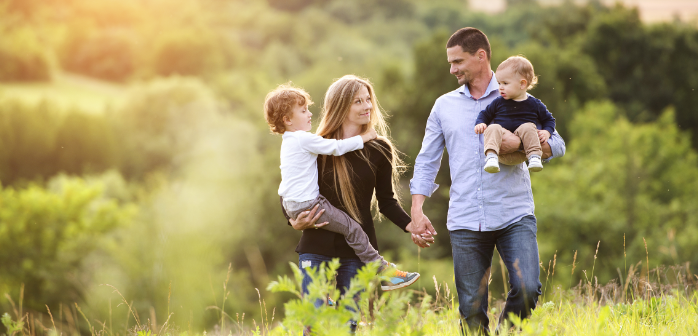
Limb Development in Children
Children’s growth and development refers to the overall process involving both physical and psychological development from birth to maturity. Limb development is the most observable one. A child’s height will reach 3 times that at birth, and the weight 20 times that at birth. Preadolescence is a crucial period of human growth and development. Whether or not a child’s growth and development is normal during this period, there will be very different impacts on the adult physique and mind. Therefore, during this period, it is important that parents pay great attention to their child’s nutrition, health, sports and other aspects, which help to promote the sound growth and development in the child’s body and lay a foundation for a robust physique in adulthood.
Active participation in sports and proper physical activity will not only promote the body’s metabolism and enhance the functional development of the respiratory and cardiovascular systems, but also will promote physical development with the aid of appropriate nutrition, especially bone and muscle development. For consistent exercisers, bones expand in diameter, the bone marrow cavity increases, muscle fiber thickens, and mitochondrial oxidase activity increases. All of this ensures that a child grows more quickly, with significant improvement in speed, endurance, and muscle strength, and more sensitive and accurate reflexes.
Furthermore, children actively involved in sports and outdoor activities are more outgoing, mentally lively and physically agile. They also excel in competition and teamwork, develop a positive personality, and are able to handle both success and failure with the right attitude.
School children will inevitably suffer injuries from sports and outdoor activities, with limb and joint sprains, bone fracture and dislocation among the most common injuries. We usually divide children’s sport injuries into non-fracture injury and fracture injury. Non-fracture injury can be treated with simple controlled rest and suspension of exercise. It takes 2 weeks or so, generally without sequelae (after effects). One relatively common injury is the ankle sprain, which usually occurs during sports and outdoor activities. It is important to stress here that children with an ankle sprain should be timely and professionally treated to avoid habitual sprain of the ankle, which occurs when the initial sprain does not receive timely, professional treatment.
Preventing children from participating in exercise and activity for fear of fracture is unjustified and unnecessary. Teaching children how to prevent sport injuries can effectively reduce the incidence of fracture. Warm-up exercises can prevent sport injuries, and the adaptability and flexibility brought by exercise itself can also help children effectively deal with sport-induced accidental injury. Children are not the epitome of adults, so sequelae and complications caused by fractures are relatively rare in children.
Children’s fractures are often characterized as either bone fractures or epiphyseal fractures. Since children are in their growth and development period, and have growth plates in their long bones (unlike adult bones), a fracture in the epiphysis may affect future growth. In most cases, fractures in children are healed with conservative treatment. As limbs of children are growing, the mild displacement and bending of the fractured bones will correct on its own accord during growth and development. However, epiphyseal fractures need to be treated intensively, and some types of epiphyseal fractures will lead to deformities and may impact functions. It should be stressed here that children are not the epitome of adults, as the latter more often than not requires surgical treatment for fractures. With the development of pediatric orthopedics, 90% of child fractures can be healed under conservative treatment or after minimally invasive surgery. Practically all limb fractures with dislocation can be treated with minimally invasive surgery, and almost all epiphyseal fractures with dislocation can also be treated in the same manner. In the event of child fracture, please promptly visit a hospital with a professional pediatric orthopedics department.
In addition, pay attention to problems in the lower limbs, ankle and spine during the growth and development of school children. It is suggested that preschool children should undergo physical examination in a pediatric orthopedics department. As some problems are related to child development, issues detected early on can be cured under appropriate conservative treatment, thus avoiding surgical intervention. Such problems include hip joint, knee joint and ankle joint deformities in children, knee varus or knee valgus in children, leg length discrepancy, flatfoot and telipes cavus, epiphyseal chondritis, scoliosis, spinal deformity and so on.
In conclusion, children are amazing individuals who are always subjected to uncertainty. As long as we are acquainted with child growth and development, and encourage participation in sports and exercise, all children and teens can enjoy both physical and mental wellness. In most cases, bone and joint diseases in children are not as fearful as we envision, and can be dealt with effectively through early detection, early diagnosis and early conservative treatment or minimally invasive surgery.
Copyright United Family Healthcare 2018 All right reserved ICP 京ICP备13017554号-4





